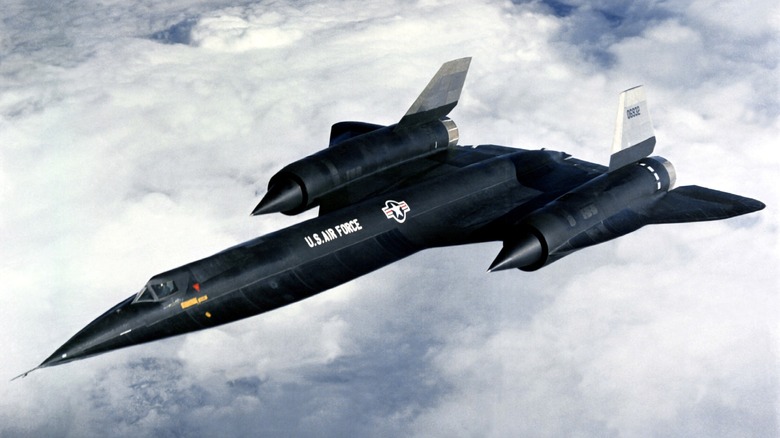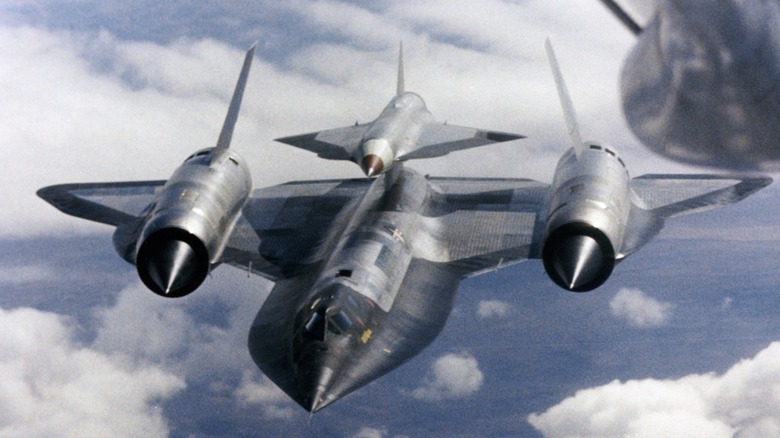This Decommissioned CIA Spy Plane Was The Only One Faster Than The SR-71 Blackbird
Ask any military aviation enthusiast or veteran what they think is the fastest jet of all time, and there's little doubt they'd answer, 'The SR-71 Blackbird.' However, they'd be incorrect, though with some caveats. The SR-71 set some seriously fast speed records, earning its well-deserved reputation, but there's another jet that the CIA flew that was a precursor to the SR-71, which wasn't revealed to the world until 1989.
The A-12 Oxcart was a fast, sleek, and effective spy plane, though it had a brief operational life before entering retirement. It's also one of the rarest aircraft ever photographed in flight. As the precursor to the SR-71, the A-12 set many of the standards the later aircraft would follow, and they bear a strikingly similar design. They look so much alike that it wouldn't be surprising for someone to misidentify an A-12 as an SR-71. Outside of looking alike, the A-12 had something that the SR-71 didn't: a higher speed. Despite what you'd likely read or heard about the Blackbird, the A-12 was technically faster.
According to the CIA, the A-12 had a documented maximum speed of Mach 3.29 (2,208 mph) at a ceiling of 90,000 feet, while the SR-71's top speed was Mach 3.3 (2,193 mph) at 85,069 feet. Mach values are different depending on altitude, which is why the Blackbird's is slightly higher. Despite the A-12's faster speed, the SR-71's documented speed record is recognized, as is its official world altitude record. Regardless, the Oxcart was able to fly at a higher altitude and with greater speed.
The history of the A-12 Oxcart
The A-12 Oxcart was initially meant to replace the U-2 Dragon Lady, but this never happened, and the U.S. Air Force continues to fly the U-2 decades after retiring the A-12. The aircraft was produced for a couple of years in to the 1960s and was first operated in 1962. It was retired in 1968 after flying only one reconnaissance operation, codenamed Black Shield. Of the 15 A-12s built, six were lost due to accidents, and nine remain in museums around the U.S., including the CIA museum at Langley, Virginia.
Flying the A-12 was dangerous and challenging. Friction from flying so fast caused the cockpit to heat up to 500 degrees Fahrenheit. This required the pilot to wear a refrigerated space suit so they wouldn't be cooked alive. The A-12 resulted in the production of two M-21 variants, which were two-seat aircraft that carried and launched the Lockheed D-21 drone.
The ramjet-powered D-21 was an ahead-of-its-time uncrewed high-flying reconnaissance drone that the M-21 carried and deployed over a target location. The drone was semi-autonomous and remotely piloted when deployed from the M-12. It would then return to a rendezvous point, eject its data storage device for recovery, and then self-destruct. A JC-130 Hercules captured the package in the air. Of the two M-21s produced, one was lost, and the remaining one is on display at Seattle, Washington's Museum of Flight alongside its D-21.

